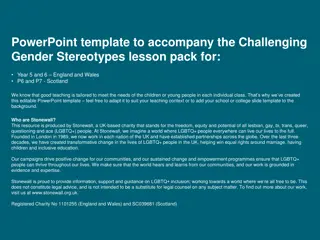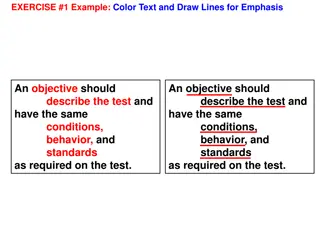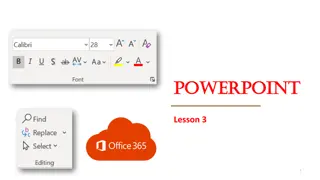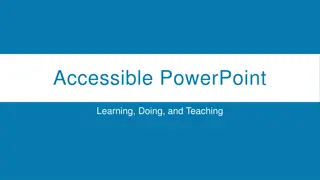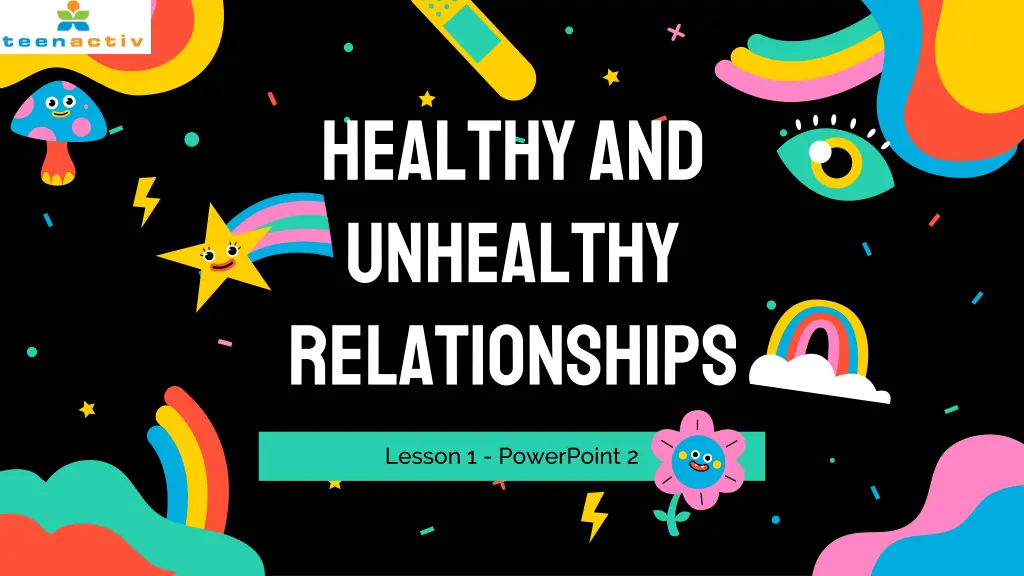
Recognizing Healthy and Unhealthy Relationships - Lesson Insights
Explore the characteristics of healthy and unhealthy relationships in this informative lesson. Discover the key qualities that define a positive relationship and learn to identify warning signs of toxic dynamics. Empower yourself with knowledge to foster healthy connections and maintain boundaries.
Download Presentation

Please find below an Image/Link to download the presentation.
The content on the website is provided AS IS for your information and personal use only. It may not be sold, licensed, or shared on other websites without obtaining consent from the author. If you encounter any issues during the download, it is possible that the publisher has removed the file from their server.
You are allowed to download the files provided on this website for personal or commercial use, subject to the condition that they are used lawfully. All files are the property of their respective owners.
The content on the website is provided AS IS for your information and personal use only. It may not be sold, licensed, or shared on other websites without obtaining consent from the author.
E N D
Presentation Transcript
Healthy and unhealthy relationships Lesson 1 - PowerPoint 2
Characteristics of healthy relationships In a positive relationship positive relationship, a person can still be their own person, as well as being part of a couple. A healthy relationship healthy relationship makes a person feel good about themselves and their partner. They can have fun together and still be themselves. All relationships are different, but healthy relationships share at least five things in common - the S.H.A.R.E. qualities.
Safety Safety: In a healthy relationship, a person feels safe. They do not have to worry that their partner will harm them physically or emotionally, and they are not tempted to harm them. A person can change their mind about something - without being afraid of how their friend will respond. Honesty Honesty: A person does not hide anything important from their friend and can say what they think without fear of being ridiculed. They can admit to being wrong and working with their partner to resolve disagreements by talking honestly. Acceptance Acceptance: They accept each other as they are. They appreciate their friends unique qualities, such as shyness or outgoing, and do not try to fix them. If there are qualities a person does not like about their partner, then maybe they should not be with that person. Respect Respect: Both partners think highly of each other. They do not feel superior or inferior to their partner in important ways. They respect each other s right to have separate opinions and ideas. Enjoyment Enjoyment: A good relationship is not just about how two people treat each other - it also must be enjoyable. In a healthy relationship, they can play, laugh together, and have fun. 01 02 03
CHARACTERISTICS OF UNHEALTHY RELATHIONSHIPS Control: Control: one person makes all the decisions and tells the other what to do, what to wear, or who to spend time with. They are jealous, and/or try to isolate the other person from their friends and family. Dependence: Dependence: one person feels that they can t live without the other. Or they threaten to do something drastic if the relationship ends. Digital monitoring or clocking : Digital monitoring or clocking : one person uses social media sites like Instagram and Snapchat to keep tabs on the other person. They constantly message or text the other person and demand quick responses. Dishonesty: Dishonesty: one person lies to, steals from, or keeps information from the other. Disrespect: Disrespect: one person makes fun of the other or talks about them behind their back.
Hostility: Hostility: one person picks a fight with the other. This may lead to one person changing their behaviour to avoid upsetting the other. Harassment: Harassment: one person uses unwanted, unwelcome, and uninvited behaviour to make the other feel unsafe. They may use cat calls to make inappropriate comments about the other's body or make physical advances without consent. Intimidation: Intimidation: one person tries to control the other by making them fearful or timid. They may attempt to keep the other person from friends and family or threaten violence or a break-up. Physical violence: Physical violence: one person uses force to get their way (such as hitting, slapping, grabbing, or shoving).

